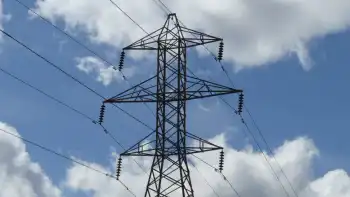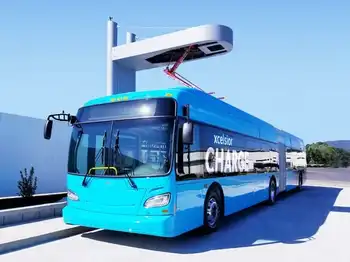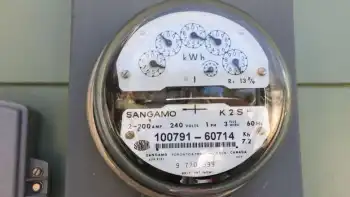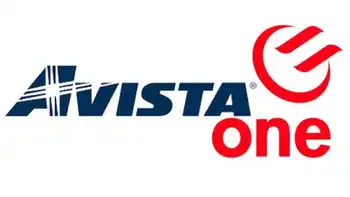Agency proposes a boost for California solar
RIVERSIDE, CALIFORNIA - In a move toward reaching Gov. Schwarzenegger's goal of a million solar rooftops within a decade, a state agency released a proposal to add $300 million in rebates next year for businesses that install solar electric systems.
If the California Public Utilities Commission gives final approval of the plan, there will be a $342 million rebates pot for new commercial solar installations next year, compared to about $80 million spent in 2005, to make the technology more cost-effective.
PUC spokeswoman Susan Carothers said that the agency was still trying to determine what impact enlargement of the rebate program will have on electric rates.
The commission also said it intends soon to adopt "a separate and more - elaborate program," calling for California Solar Initiative to provide broader incentives for the development of solar technology in the state. It said the staffs of the PUC and California Energy Commission will develop a proposal and present it to the PUC board no later than Dec. 15.
While increasing the fund of rebate money, the PUC proposes to reduce the size of each rebate. Each application of more than 30 kil owatts would be reduced to $2.80 a watt from the current $3.50 a watt.
Demand for the PUC's commercial solar rebate program has been so great that rebate money for 2005 ran dry several months ago. PUC Administrative Law Judge Kim Malcolm, who issued the recent decision, said an estimated $200 million in commercial projects are on a waiting list.
The reimbursement per watt is recommended to be reduced, Malcolm said, to make the money stretch farther. "We don't want to spend more than we have to," she said.
"This is, I believe, the (Schwarzenegger) administration's response to the brick wall that SB 1 hit at the end of the legislative session," said Bob Raymer, technical director for the California Building Industry Association, referring to the governor's solar bill.
Legislation, which would have provided up to $1.8 billion in solar incentives with the goal of having 3,000 megawatts of solar rooftop panels installed in 10 years, had the broad support of home builders, environmentalists and utilities, but bogged down in the Assembly over labor issues, Raymer said, including prevailing wage issues.
Bernadette Del Chiaro, clean -- energy advocate with Environment California, a strong supporter of solar energy, said the group welcomed the increase in subsidies for the commercial solar systems.
But she said other steps need to be taken to achieve the governor's solar objectives, such as requiring home builders to provide a solar electricity option on all new homes and raising the cap on the amount of solar electricity fed into the statewide transmission grid that utilities will credit. Both of these measures require legislation and cannot be accomplished by the PUC, she said.
Malcolm said the PUC also does not have authority to increase funding for a separate rebate program aimed at smaller solar systems installed primarily on homes. That program, she said, is administered by the California Energy Commission.
Unlike the PUC, the California Energy Commission does not have a waiting list for its residential rebate program, said Tim Tutt, adviser to California Energy Commissioner Jackalyne Pfannenstiel . Tutt said the energy commission program has been funding rebates at the rate of about $30 million a year.
As of Nov. 8, he said, the commission had $58 million in solar rebate funds left for the remainder of 2005 and 2006. If that money runs out, he said, the commission can replenish the fund by shifting money from other renewable - energy programs that have not been tapped.
According to the PUC, both its solar - rebate program and that of the energy commission have consistently exhausted their funding allocations, which over the years have exceeded $1 billion.
The objectives of both rebate programs, Malcolm said in the decision, are to diversify the state's energy portfolio and reduce demand for additional transmission and distribution facilities.
A joint report of the PUC and the energy commission recommends consolidating the residential and commercial solar incentives programs into a single program by June 2006.
Related News

US Approves Rule to Boost Renewable Transmission
WASHINGTON - On May 13th, 2024, the US took a monumental step towards its clean energy goals. The Federal Energy Regulatory Commission (FERC) approved a long-awaited rule designed to significantly expand the transmission of renewable energy across the nation's power grid. This decision aligns with President Biden's ambitious plan to achieve net-zero carbon emissions by 2050, with renewable energy playing a central role.
The new rule tackles a critical bottleneck hindering the widespread adoption of renewables – transmission infrastructure. Unlike traditional power plants like coal or natural gas that run constantly, solar and wind power generation fluctuates with weather conditions.…




